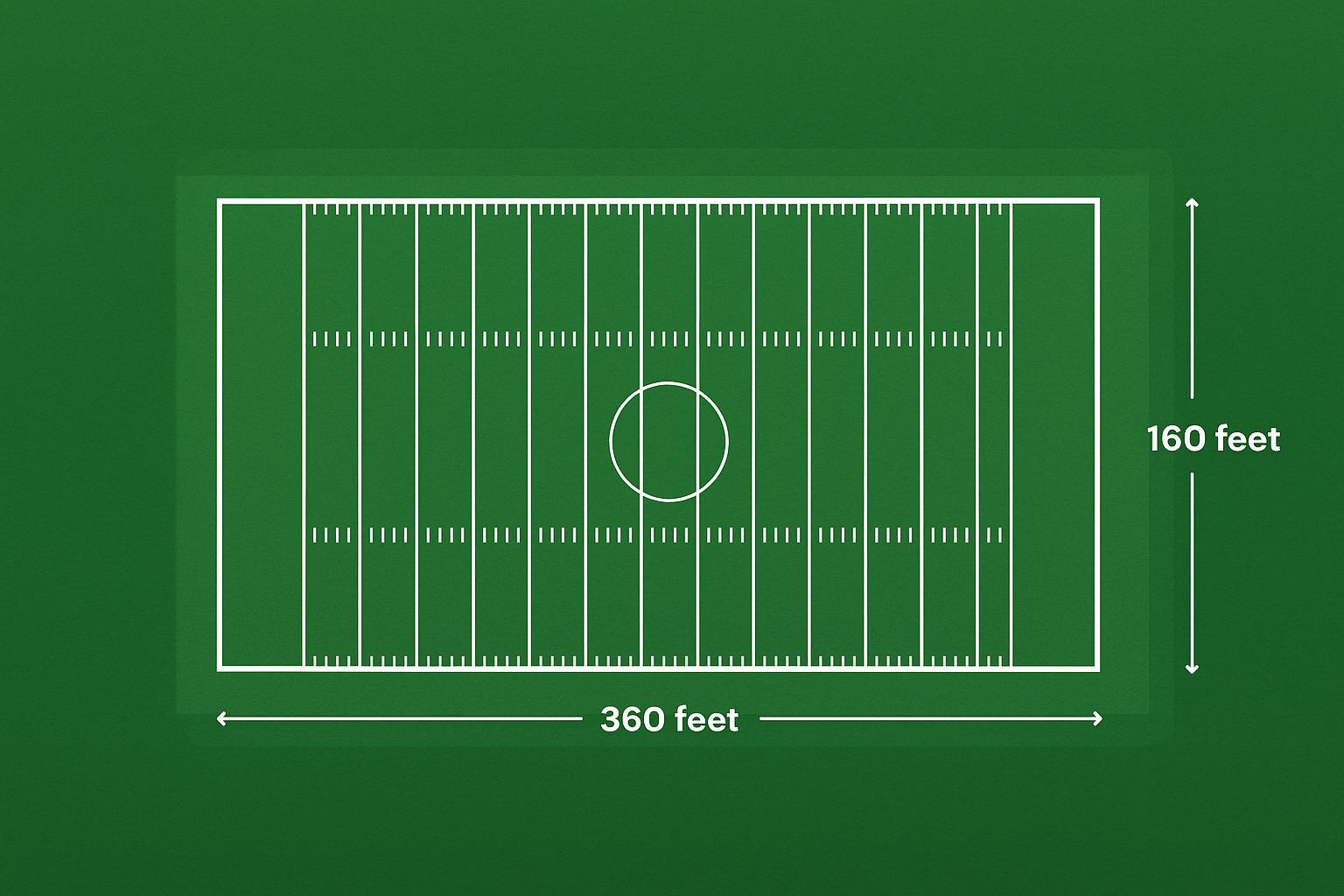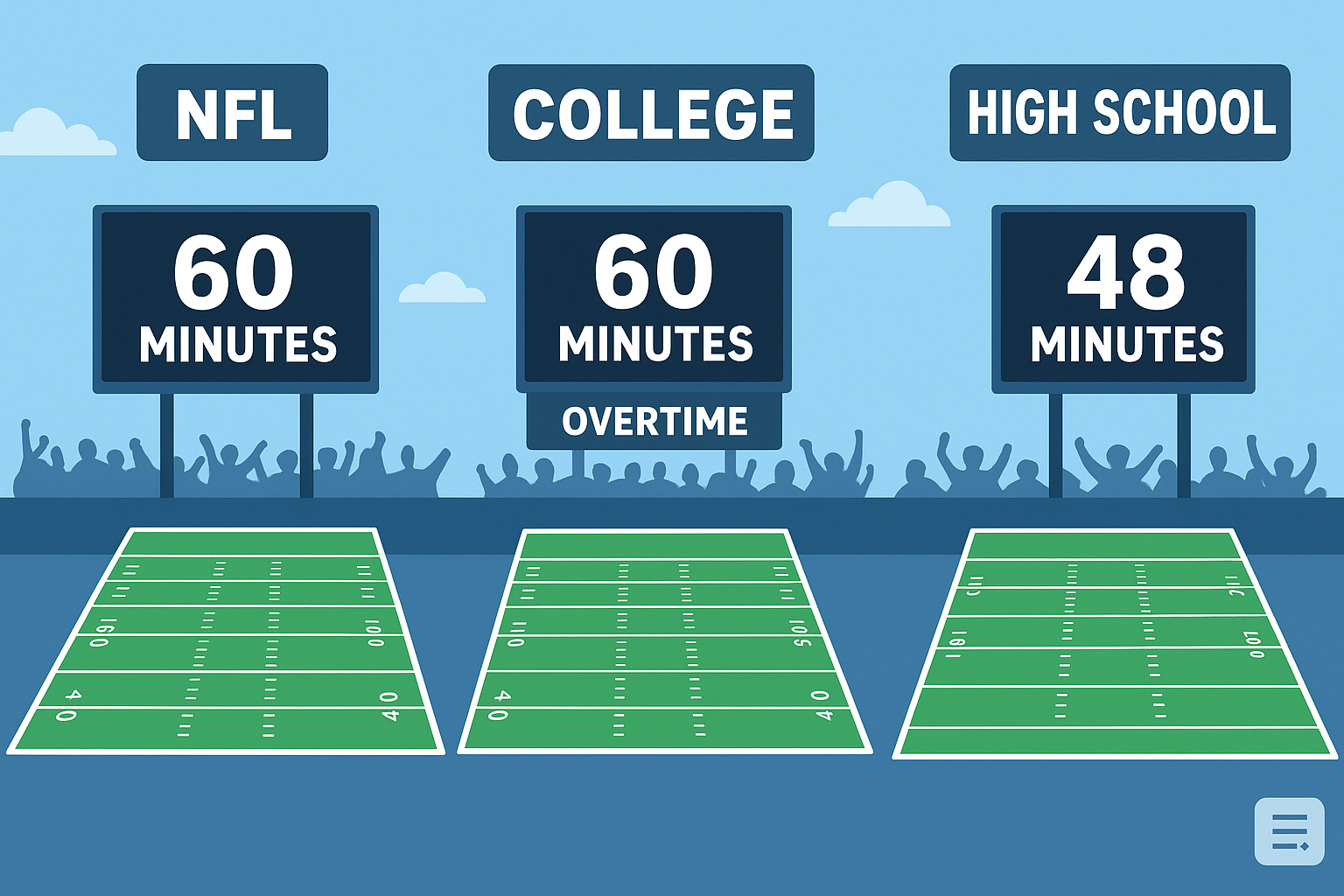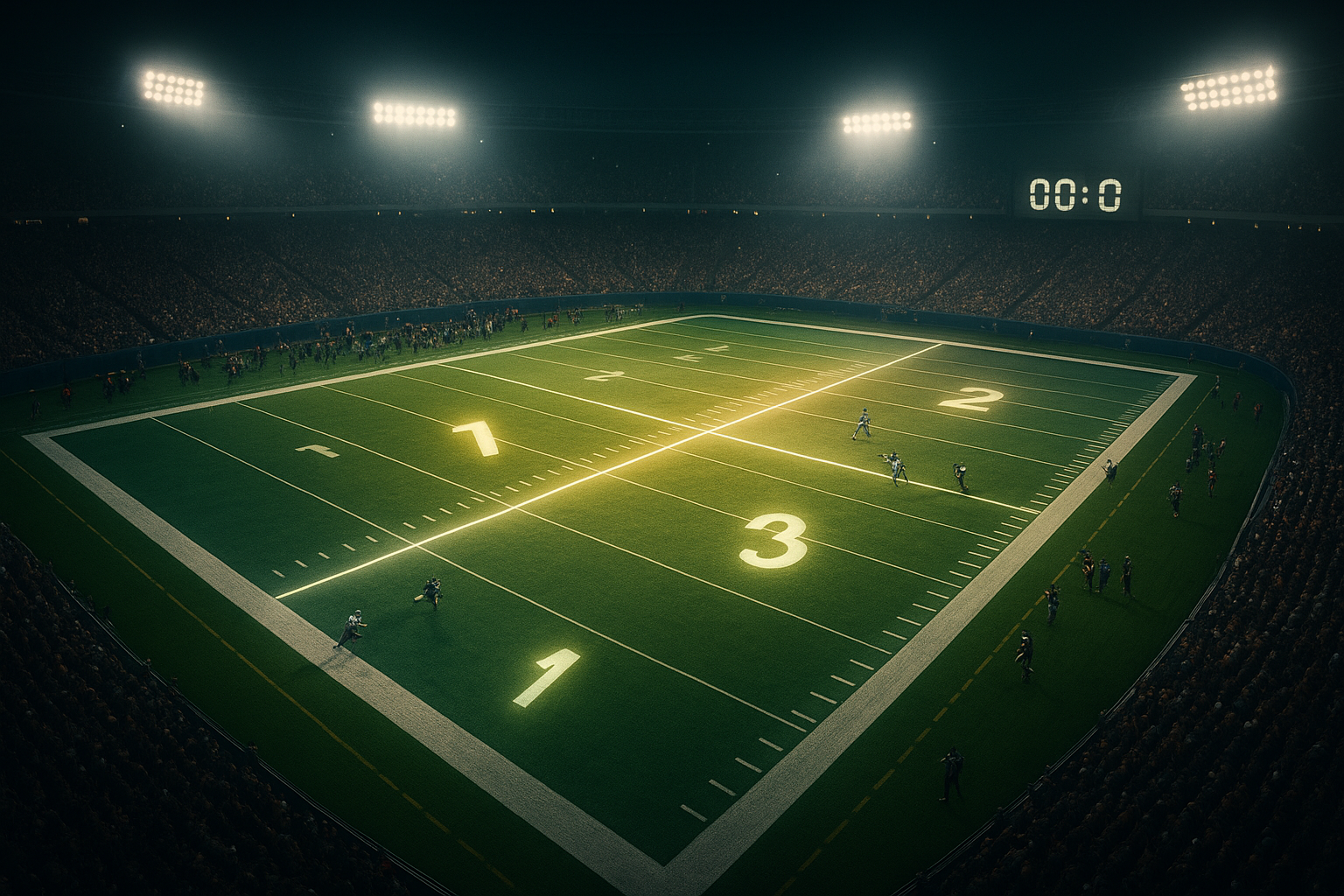If you’ve ever stood on a football field — whether at a high-school game or during a major championship — you’ve probably wondered just how big that giant rectangle of grass really is. And more importantly: how many acres is a football field? It’s a surprisingly practical question. Whether you’re designing outdoor facilities, planning sports events, or simply satisfying late-night curiosity… understanding the true size of a football field unlocks a lot more than just trivia points.
Before we get into acres, let’s start with the basics.
The Standard Dimensions of a Football Field
A regulation American football field — the one used in NFL and college games — measures:
- 360 feet long (120 yards: 100-yard playing field + two 10-yard end zones)
- 160 feet wide (53⅓ yards)
That gives us:
➡ 57,600 square feet of on-field real estate.
But here’s where the math gets interesting.
✅ Quick Answer: How Many Acres Is a Football Field?
A standard football field covers 1.32 acres — including both end zones.
That number comes from:
57,600 sq ft ÷ 43,560 sq ft (1 acre) ≈ 1.32 acres
So if someone tells you “a football field equals one acre”…
They’re undercounting by about 32%.
This simple calculation is one reason the question often shows up in land planning. Fields make a great visual reference when discussing property size — especially for outdoor construction, sports complexes, and community recreation spaces.
Why Doesn’t a Football Field Equal Exactly One Acre?
An acre wasn’t designed with sports in mind — it’s a historical land measurement from medieval agriculture. Farmers originally defined it as the amount of land one person could plough in a day with oxen.
So even though we love neat comparisons, the acre and the football field simply evolved on two very different paths.
Still, the approximation works:
If you see 10 acres, imagine roughly 7.5 football fields.
That’s close enough for many ballpark estimates — just not engineering plans.
Where the Numbers Matter in Real Life
Football field sizing plays a key role in a surprising number of industries:
- Outdoor sports design: Stadiums, multi-sport complexes, and turf installations use field dimensions as an anchor point.
- Educational campuses: Planning athletic zones for schools and universities.
- Commercial land development: Helping everyday buyers visualize acreage during sales.
- Event layouts: From outdoor festivals to charity sports events.
- Recreation upgrades: Local parks adding signature field amenities.
For example, someone developing an outdoor sports center needs to plan not just for the field itself, but sideline areas, spectator stands, locker rooms, and more — easily doubling the required land.
Speaking of design inspiration, if you’re exploring how creative spatial planning works inside residential settings too, our guide on fireplace wall ideas shows how a focal point can transform even small living spaces — from cozy homes to community lounges with big-screen game nights. (Interlink 1)
Not All Football Fields Are the Same Size
Even though 1.32 acres is the golden number in the U.S. — sports vary worldwide.
Here’s how the global pitch compares:
| Football Type | Standard Dimensions | Total Area | Acre Equivalent |
|---|---|---|---|
| American Football | 360 × 160 ft | 57,600 sq ft | 1.32 acres |
| FIFA Soccer Pitch* | Varies (100–130 × 50–100 yd) | 64,000–108,000 sq ft | 1.47–2.47 acres |
| High School Football | Same dimensions as NFL | Same | 1.32 acres |
| Canadian Football | Longer and wider | 87,750 sq ft | 2.01 acres |
*Note: Professional pitches like in international tournaments tend to be on the larger end.
So if someone compares property size to a soccer field, the reference changes dramatically.
How Football Field Acreage Helps With Land Visualization
Visual comparison is one of the simplest ways to grasp land area:
- 5 acres ≈ 3.8 football fields
- 20 acres ≈ 15 football fields
- 1 acre ≈ 0.76 of a football field
This is extremely useful in buying rural property, estimating farming plots, or designing large-scale outdoor activities.
It’s also great when planning dream facilities. If you’ve ever considered hosting large-scale recreational events or showcasing outdoor experiences in your area, you’ll understand why even advanced sports hubs — like outdoor broadcasting venues or athletic complexes — count field acreage as a primary metric for operation. (Interlink 2, sports context continuity)
Where Acreage Comparisons Fall Short
Football fields give a mental picture, but not usable measurement detail. Acreage doesn’t tell you:
- Exact shape of the land
- Flatness for sporting or construction quality
- Safety margins for players and spectators
- Infrastructure placement (lighting poles, equipment access)
- Parking requirements for crowds
A single football field may stand alone in rural land,
but a functioning sports venue often requires 4–10 acres minimum.
So while “1.32 acres per field” is the correct number, reality demands more room to play.
What About Practice Fields or Multi-Use Fields?
The rise of multi-sport synthetic turf means many fields are built to hybrid specifications. These may adjust boundaries to support:
- Soccer + football combos
- Track and field lanes
- Youth league variations
- Community sports integration
These multi-use fields often stretch beyond the standard 1.32 acres, depending on compliance rules.
How Many Acres Do You Need for Multiple Football Fields?
If you’re planning a community or school complex:
- 2 fields → ~3 to 5 acres
- 4 fields → ~8 to 12 acres
- 8 fields → 20+ acres total
Spacing, orientation for sunlight, and bleachers all determine the final footprint.
Why Knowing Field Acreage Still Matters in 2025
The global push for healthier cities, youth sports growth, and outdoor recreation means sports facility planning is evolving. Towns want fields that:
- Support multiple sports and seasons
- Remain environmentally sustainable (water + turf materials)
- Integrate with community social activity
Football fields aren’t just game surfaces —
they’re becoming public gathering platforms.
And knowing the size is step one.
✅ Final Takeaway
✅ A full-size American football field is 1.32 acres, including end zones.
That equals 57,600 square feet and serves as one of the world’s easiest visual references for land measurement.
Next time you hear someone comparing land to a single acre?
Just smile — because you now know the field is bigger than the story.












